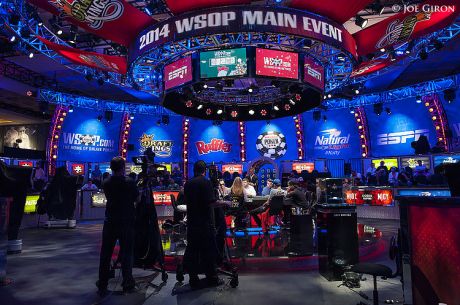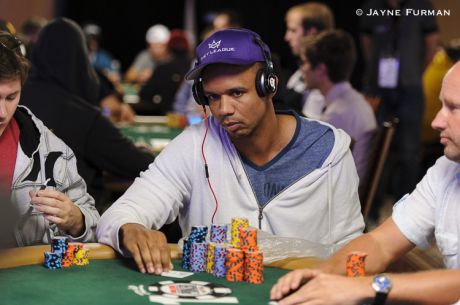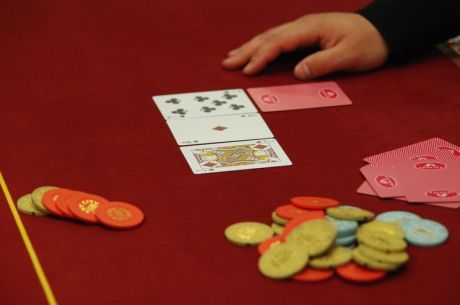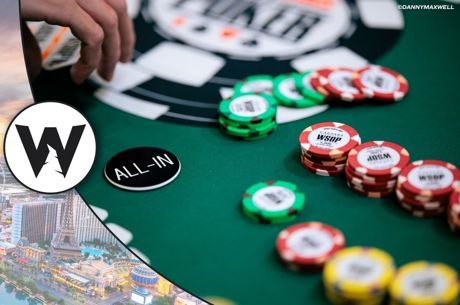When a Hand Gets Out of Hand: Compounding Mistakes After the Flop
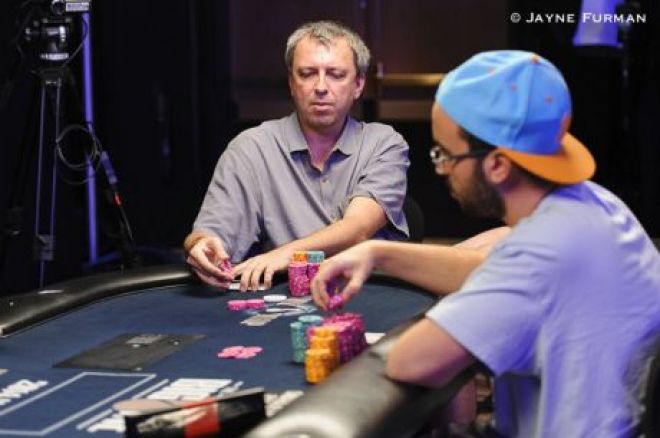
Over the course of the 2014 World Series of Poker, I reported on hundreds of hands ranging from small buy-in mixed game tournaments to the $1 million “Big One for One Drop.” As the November Nine draws near — just a week-and-a-half away (!) — I’m recalling some of the more memorable hands from the summer, including one from one of the last preliminary events that vividly illustrated how small mistakes early in a hand can lead to greater ones later.
The Hand
The hand occurred late on Day 3 of Event #63: $1,500 Six Handed 10-Game Mix. At this time, Bryn Kenney and Jan Suchanek were heads-up for the bracelet and the players were roughly even in chips with approximately 1,000,000 apiece. The game had just switched over to no-limit hold’em with blinds at 6,000/12,000 with a 3,000 ante.
Suchanek had the button and opted to limp. Kenney popped it up to 33,000 from the big bind and Suchanek called. The dealer fanned the Q♥9♠2♥ flop and Kenney checked. Suchanek took this opportunity to fire 105,000 into the middle, and Kenney called.
The turn was the 4♦ and Kenney checked for a second time. Suchanek bet 250,000 and Kenney called once more. The 9♣ then paired the board on the river. Kenney checked one final time and Suchanek shoved for about 520,000. Kenney snap-called, rolling over 10♠9♥ for trip nines. Suchanek showed K♣2♣ for nines and deuces before his hand was pulled into the muck. Kenney scored the elimination and was awarded his first gold bracelet as well as $153,220 in first-place prize money.
This hand serves as a prime learning tool, as it shows how quickly mistakes can build upon one another in a single hand. One mistake can put a player in a dire situation where he is forced to play a certain way. From there, the player keeps digging deeper and deeper until there is no way out and the consequences become dire. This, of course, can all be traced back to a poor decision made early in the hand.
Passive Play Preflop
Let’s take the hand from the top. Suchanek begins the hand by limping from the button. This is generally not recommended as it is a passive action, although as Nate Meyvis discussed here a couple of weeks ago, there are situations when limping from late position can be effective.
Generally speaking, though, in heads-up play limping from the button is often not a preferred play. A raise from the button not only allows you to pick up your opponent’s big blind if he opts to fold, but also gives you the aggressive momentum postflop with the added benefit of acting last.
Kenney puts out a raise after Suchanek limps, thus showing strength and giving Kenney the momentum. Suchanek merely calls, apparently hoping to connect on the flop with clubs, kings, or deuces. He should assume that Kenney will be continuing with a bet after the flop most of the time, so if he whiffs Suchanek will be forced to fold because he played the hand passively. This was Suchanek’s first mistake.
Overbetting the Flop
The flop falls and Kenney does not continue out, but rather checks. Meanwhile Suchanek flopped bottom pair and opted to lead into his opponent. Given the opening, Suchanek’s decision to bet is fine, but the issue to discuss on this street concerns his bet-sizing.
Heading to the flop, there was 72,000 in the middle (33,000 from each player plus 6,000 in antes). Suchanek fired out 105,000, which is a substantial overbet of what’s already in the middle.
Rather than attempting to play small ball, Suchanek opted to play a large pot with a relatively weak holding. A call from Kenney puts 282,000 into the middle, meaning that each coming bet will have to be larger and larger. Essentially, Suchanek is bloating the pot with mediocre hand and setting himself up for disaster down the road.
Pushing the Turn
Kenney did in fact call with his middle pair and then checked over to Suchanek on the turn. Suchanek, now faced with a sizable pot in the middle, opted to fire another large bullet of 250,000 chips — again almost a pot-sized bet.

This bet alone represented one quarter of what Suchanek began the hand with, meaning that if he failed to push Kenney off of his hand on the turn, he could be in deep trouble. Of course, the circumstance can be traced back to mistakes on the earlier streets that saw Suchanek give Kenney the aggressive action before the flop then bloat the pot on the flop.
Kenney called once again, meaning that heading to the river the pot was up to 782,000 — 39% of the chips in play.
The River Shove
By now, Suchanek could assume that most hands Kenney holds have him beat, other than four to a heart flush or something like Jx10x for a flopped open-ended straight draw.
When Kenney checked for a third time, Suchanek believed the only way he could win the pot was by turning his own hand into a bluff. His pair of deuces were most likely not going to be best most of the time, so he decided he had to make a substantial bet on the river with high hopes that Kenney would lay his hand down. Unfortunately for Suchanek, there was already so much in the middle that in order to make this play he was forced to move all in for his last 520,000.
Kenney, of course, drilled the river and called with his trips, ending both Suchanek’s tournament life and the tournament itself. Suchanek was forced to settle for a runner-up finish due to his mistakes compounding and putting him in a dreadful position.
Had Suchanek made more careful decisions early in the hand with an eye toward future streets, things may have played out much differently.
Get all the latest PokerNews updates on your social media outlets. Follow us on Twitter and find us on both Facebook and Google+!

